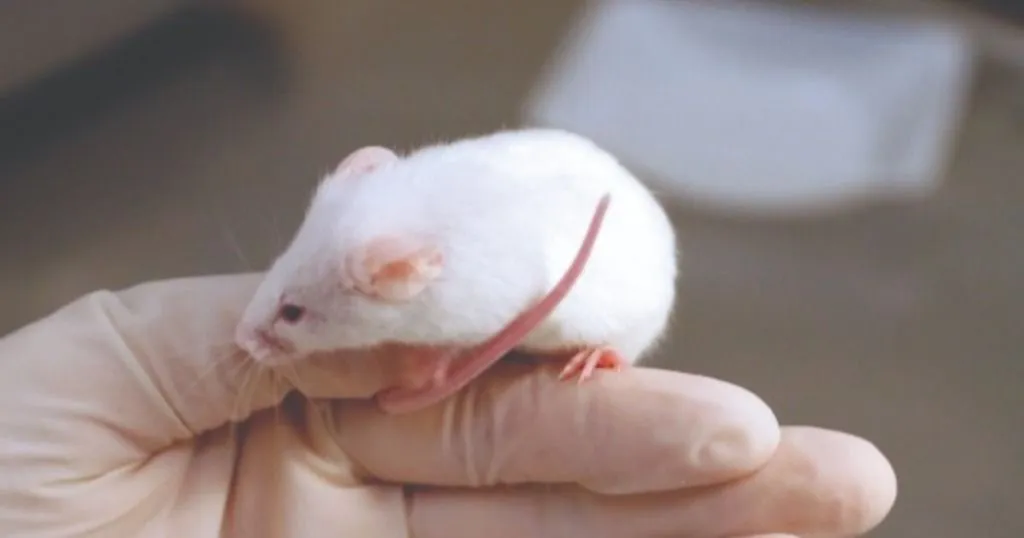In utero alcohol exposure, the effects on brain and behavior
About 10% of women worldwide drink during their pregnancy. This could cause the fetus to suffer from fetal alcohol syndrome, which can lead altered tissue structures in the brain to motor deficits.
Posted by
Published on
Thu 02 Mar. 2023
Topics
| Brain Research | EthoVision XT | Locomotion | Motor Development |

Fetal alcohol syndrome
Still today, about 10% of women worldwide drink alcohol while pregnant, which can have a severe effect on fetus development. This is called prenatal alcohol exposure (PAE), which could cause nongenetic mental retardation. One of the potential effects of this is the fetal alcohol syndrome (FAS), and is the most severe form of fetal alcohol spectrum disorder (FASD).
Drinking alcohol can be harmful for the fetus at any stage of the pregnancy, and affects them throughout their body. However, especially the developing brain is highly affected, which can result in motor deficits and atypical brain structures.
Lifelong consequences
FASD can have a wide variety of, sometimes lifelong, consequences for an affected child. It’s hard to diagnose this syndrome, since there are no clear outward physical signs of it, meaning treatment is often applied with a delay.
FASD mouse model
A group of scientists from Rouen and Caen in France wanted to test the results of alcohol during pregnancy and lactation, and for that they used mice. The pregnant mice would receive a daily subcutaneous injection with either a physiological saline solution or with diluted alcohol, from gestational day 15 (GD15) to GD20. On parturition/postnatal day 0 (P0) and P1 they received the same injections.
After this treatment, the scientists carried out various analyses, like qRT-PCR experiments from RNA, density measurements of oligodendrocytes and measurements of microvascular organization. Read more about these analyses in the original article!
Behavioral evaluations
Each mouse born from either the alcohol or the control group underwent various behavioral tests. Since humans suffering from FASD often have motor disabilities, the focus of the behavioral tests was on sensorimotor impairments.
Rightening reflex
The first test consisted of testing the pups’ rightening reflex, from P2 to P8. Each pup was put on their back on a flat horizontal surface, and the time they needed to righten themselves properly was noted. These tests were done twice consecutively, with a cutoff time of 60 s. The final rightening time value was calculated as the mean of 2 successive trials.
Increased latency
The latency of the control mice to turn themselves upright decreased from P2 to P8. The PAE mice tended to rapidly turn back to a prone position, and their latency did not change until P6. Starting that day, they were significantly slower to righten themselves than the control pups. The effect was more clear in female mice.
Tilted plane rightening reflex
From P5 to P8, the same test was done, but then on a 20° tilted plane with the mouse’s head facing downward. Again, the mean time to righten themselves was measured, and the latency for a semi-rotation of 90°. In this test, no significant difference between control and PAE could be found.
Locomotion activity
In order to find any long-term effects on PAE mice, the scientists tested locomotion activity at P15 and P45. Each mouse was first isolated for 5 minutes in an individual cage, and then put in a sound-muffling 50 x 50 x 38 cm box at 20°C, limiting anxiety. In this open arena they were allowed to explore.
Traveling distance
Using video tracking in EthoVision XT, the distance that each mouse traveled during a 30-min period was measured . All data was expressed in 10-min intervals and also for the whole 30-min recording period. There was no significant effect of distance travelled on P15, and none either in the time spent in the central zone of the arena. However, at P45, the PAE mice travelled a significantly reduced distance compared to the control, caused by increased periods of immobility in the outer zone of the arena.
Sex differences
Furthermore, it becomes clear that there are slight sex differences caused by PAE, with the females being slightly slower in the rightening test. It shows that even environment-caused defects could be gender-specific, due to the perinatal life being a vital period for the brain’s sexual differentiation.
Conclusion
The behavioral experiments show that prenatal alcohol exposure is capable of causing longterm motor deficits. On top of that, it takes time for the effects of the alcohol exposure to become visible. This means that any treatment applied on humans usually happens with a delay, since it is hard to notice when they are very young. Various brain structures are also affected, please see the original paper below for more information on that part.
Reference
Brosolo, M., Lecointre, M., Laquerrière, A., Janin, F., Genty, D., Lebon, A., Lesueur, C., Vivien, D., Marret, S., Marguet, F. and Gonzalez, B. J. (2022). In utero alcohol exposure impairs vessel associated positioning and differentiation of oligodendrocytes in the developing neocortex. Neurobiology of Disease, 171, 105791.
Related Posts

Recent applications of locomotor and gait analysis

CatWalk XT: Valid tool for objective gait analysis in TBI mice model

